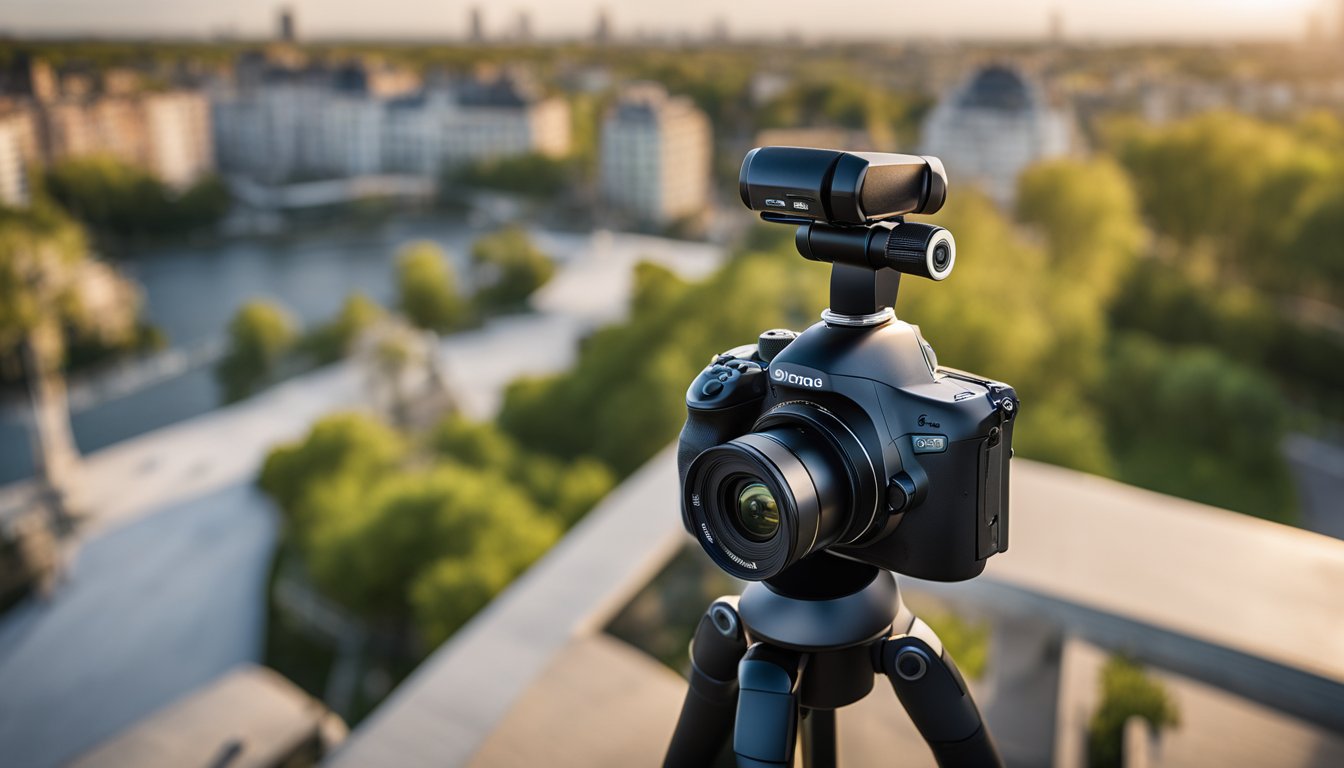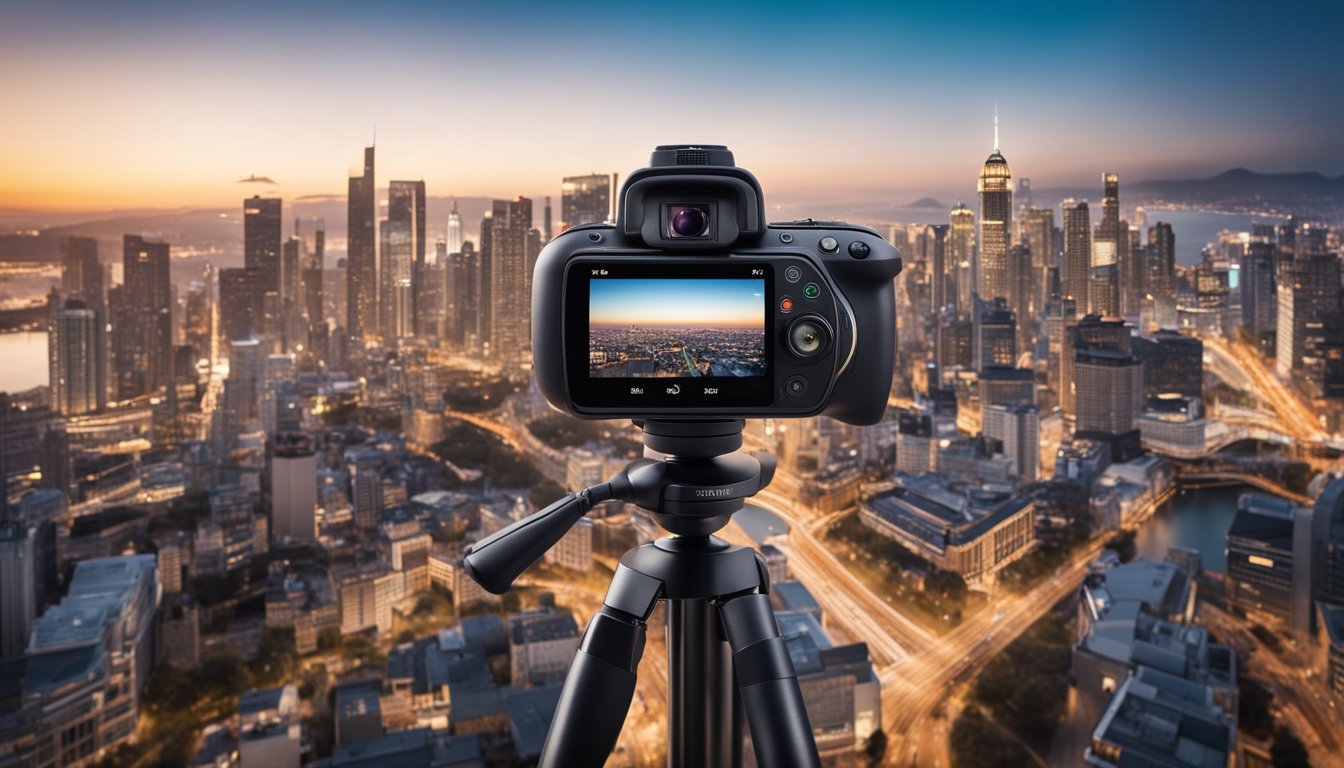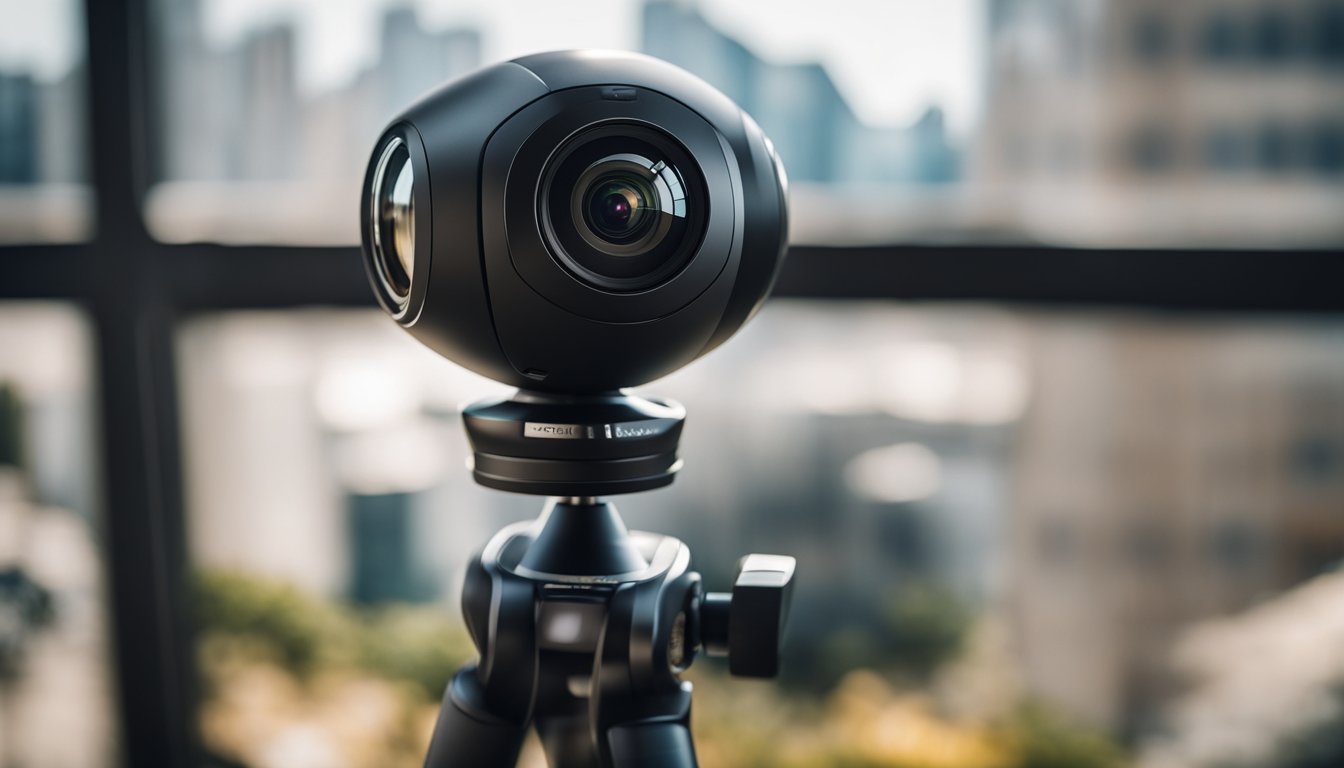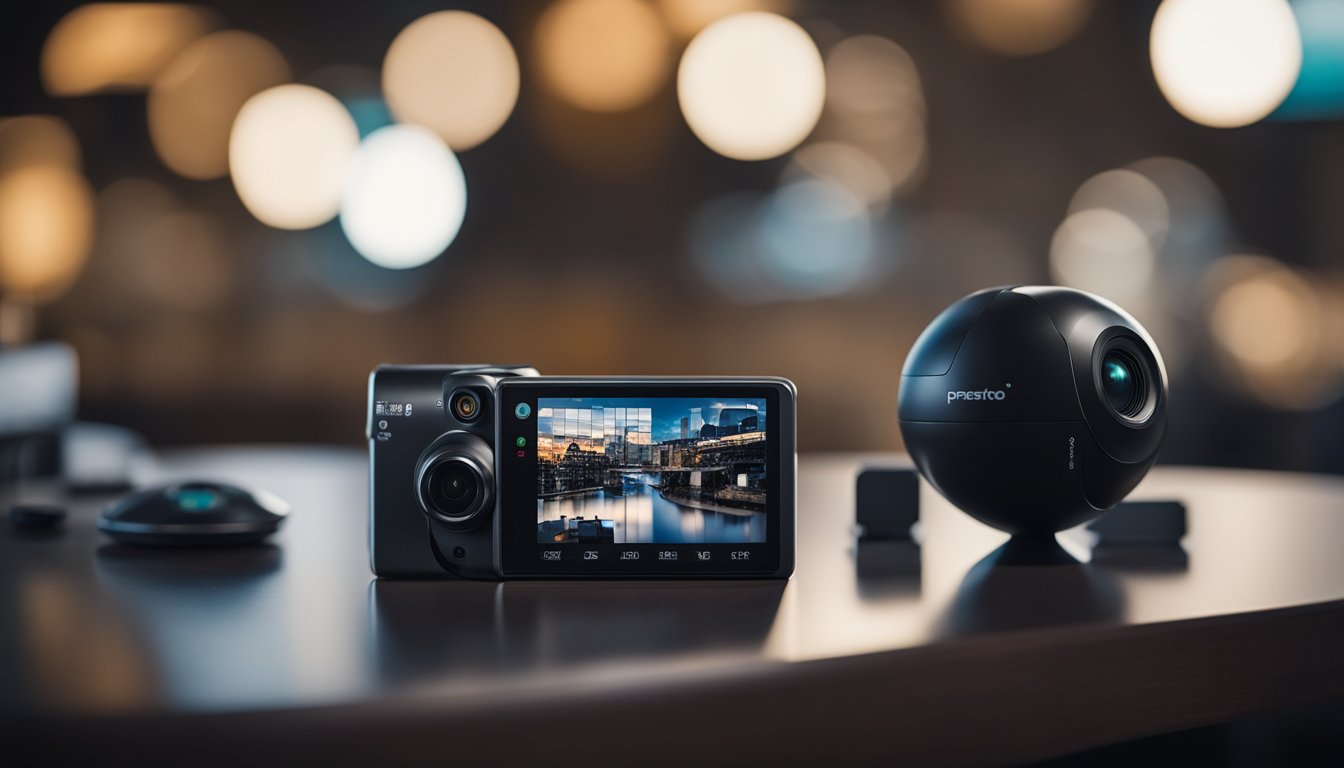If you’re looking to capture immersive 360-degree photos and videos, you don’t need to break the bank. There are plenty of high-quality 360 cameras available for under $1000 that can help you create stunning content. In this article, we’ll introduce you to the best 360 cameras under $1000 and provide you with all the information you need to make an informed purchase.
Understanding 360 cameras is the first step in choosing the best one for you. These cameras capture a full 360-degree field of view, allowing you to create immersive content that puts your viewers in the middle of the action. When shopping for a 360 camera, there are several factors to consider, including video and image performance, design and ergonomics, audio and connectivity, and lens and accessory options. We’ll cover all of these factors and more in our guide to the best 360 cameras under $1000.
Key Takeaways
- You don’t need to spend a fortune to capture immersive 360-degree photos and videos.
- When shopping for a 360 camera, consider factors such as video and image performance, design and ergonomics, audio and connectivity, and lens and accessory options.
- Our guide to the best 360 cameras under $1000 will help you make an informed purchase.
Understanding 360 Cameras
https://www.youtube.com/watch?v=IXQjYoYr-aQ&embed=true
If you’re looking for a camera that can capture everything around you, then a 360 camera is what you need. 360 cameras have become increasingly popular over the years, and for good reason. They allow you to capture everything around you in a single shot, making them perfect for travel, events, and even virtual tours.
Sensor Size
One of the most important things to consider when buying a 360 camera is the sensor size. The larger the sensor, the better the image quality will be. A larger sensor will also allow the camera to capture more light, resulting in better low-light performance. Some of the best 360 cameras under $1000 have sensors as large as 1 inch, which is comparable to some high-end point-and-shoot cameras.
Lens Quality
Another important factor to consider is the quality of the lens. A good lens will help ensure that the images are sharp and clear. Look for a 360 camera with a wide aperture, which will allow more light to enter the lens. This will result in better low-light performance and a shallower depth of field.

Resolution and Video Quality
Resolution and video quality are also important factors to consider. Most 360 cameras can shoot in 4K, which is the standard for high-quality video. However, some cameras can shoot in even higher resolutions, such as 5.7K or 6K. Keep in mind that higher resolution video will require more storage space and may be more difficult to edit.
When it comes to video quality, look for a camera that can shoot at a high frame rate. This will result in smoother, more fluid video. Some cameras can shoot at up to 60 frames per second, which is ideal for action shots.
Overall, when looking for the best 360 camera under $1000, be sure to consider the sensor size, lens quality, resolution, and video quality. By doing so, you’ll be able to find a camera that meets your needs and captures stunning 360-degree images and videos.
Top Picks for 360 Cameras Under $1000
https://www.youtube.com/watch?v=FqeZGKZfcK8&embed=true
If you’re looking for the best 360 camera that won’t break the bank, you’re in luck! There are plenty of great options on the market for under $1000. Here are our top picks for the best 360 cameras under $1000.
Best Overall
« Free 360 Panorama Camera: Capture Stunning 360-Degree Photos and Videos
Can We Install a 360 Camera in XUV700 AX7? A Quick Guide »
Camera Features to Consider
When looking for the best 360 camera under $1000, there are several features you should consider. Here are some of the most important ones:
Autofocus and Speed
Autofocus is an essential feature that helps you capture sharp and clear images and videos. When it comes to 360 cameras, autofocus becomes even more critical, as you need to capture the entire scene without missing any details. Look for cameras with fast and accurate autofocus systems that can keep up with the action.
Speed is another crucial factor to consider. A camera with a fast burst mode can capture multiple shots quickly, which is essential when you’re trying to capture fast-moving subjects. A high frame rate is also important, as it ensures smooth and seamless video playback.
Battery Life and Power Management
Battery life is an essential consideration when choosing a 360 camera. You don’t want to run out of power in the middle of a shoot, so look for cameras with long battery life. Some cameras come with removable batteries, which is a convenient feature as you can carry spare batteries and swap them out when needed.
Power management is another important factor to consider. Some cameras come with power-saving modes that help to conserve battery life. Others have built-in power banks that allow you to charge your phone or other devices while on the go.
Compactness and Portability
360 cameras are designed to be portable and easy to carry around. Look for cameras that are compact and lightweight, making them easy to pack in your bag and take with you on the go. Some cameras come with built-in handles or grips, making them easy to hold and shoot with.
Portability is also essential, especially if you’re planning to take your camera on outdoor adventures. Look for cameras that are rugged and durable, capable of withstanding harsh weather conditions and rough handling.
By considering these features, you can find the best 360 camera under $1000 that meets your needs and delivers high-quality images and videos.
Video and Image Performance
When it comes to capturing high-quality images and videos, the best 360 cameras under $1000 offer impressive capabilities. Here are some important factors to consider when evaluating the video and image performance of a 360 camera.
https://www.youtube.com/watch?v=gStdXBJ9cGY&embed=true
4K Video Capabilities
One of the most important features to look for in a 360 camera is 4K video capabilities. This resolution provides crisp and clear footage that looks great on large screens. The Fujifilm X-S10 is a great option for those looking for 4K video capabilities. It offers high-quality video with a resolution of up to 3840 x 2160 pixels.
Low Light Performance
Low light performance is another important factor to consider when choosing a 360 camera. The ability to capture clear and bright images in dimly lit environments can make a big difference in the quality of your footage. The Sony A6100 is a great option for low light performance. It features a large APS-C sensor and advanced autofocus system that work together to produce sharp and detailed images even in low light conditions.
Image Stabilization
360 cameras can be prone to shaky footage due to their wide field of view. Image stabilization is an important feature that can help minimize this issue and produce smooth and steady footage. The GoPro MAX is a great option for image stabilization. It features advanced HyperSmooth technology that can help eliminate shaky footage and produce professional-looking results.
Overall, when evaluating the video and image performance of a 360 camera, it’s important to consider factors such as 4K video capabilities, low light performance, and image stabilization. By choosing a camera that excels in these areas, you can capture high-quality footage that looks great on any screen.
Design and Ergonomics
When it comes to 360 cameras under $1000, the design and ergonomics are crucial factors to consider. In this section, we will discuss the camera body and build, control layout and accessibility, as well as the screen and viewfinder.
Camera Body and Build
360 cameras come in various shapes and sizes. Some are compact and lightweight, while others are bulky and heavy. The camera body and build determine the durability and portability of the camera. You want a camera that is sturdy enough to withstand the rigors of outdoor shooting, yet lightweight enough to carry around with you.
Control Layout and Accessibility
The control layout and accessibility are also important considerations. You want a camera that is easy to use and navigate, with buttons and controls that are within reach. The camera should have a simple and intuitive interface that allows you to adjust settings quickly and easily.
Screen and Viewfinder
The screen and viewfinder are essential components of any camera. They allow you to compose your shots and preview your footage. A tilting screen is a useful feature that allows you to shoot from different angles. An electronic viewfinder is also a handy feature that lets you shoot in bright sunlight without any glare.
Overall, the design and ergonomics of a 360 camera are crucial factors to consider when choosing the best camera under $1000. You want a camera that is durable, portable, easy to use, and has a high-quality screen and viewfinder. With these factors in mind, you can choose a camera that meets your needs and budget.
Audio and Connectivity
When it comes to 360 cameras, audio and connectivity are two crucial factors that can make or break your experience. In this section, we’ll take a closer look at the audio and connectivity features of some of the best 360 cameras under $1000.
Built-in Microphones
Most 360 cameras come with built-in microphones that capture sound from all directions. However, the quality of the audio can vary depending on the camera. If you plan on using your 360 camera to record audio, look for cameras with high-quality microphones that can capture clear and crisp sound. Some of the best 360 cameras under $1000 with excellent built-in microphones include the GoPro MAX and the Ricoh Theta Z1.
Wireless Sharing and Apps
Sharing your 360 photos and videos with others is an essential part of the 360 camera experience. Most 360 cameras come with wireless connectivity options that allow you to share your content with others quickly. Some cameras even come with dedicated apps that make it easy to edit and share your content on social media platforms. If you’re looking for a 360 camera with excellent wireless connectivity and app support, consider the Insta360 One X2 or the GoPro MAX.
In summary, when choosing a 360 camera under $1000, pay attention to its audio and connectivity features. Look for cameras with high-quality microphones and wireless connectivity options that allow you to share your content with others quickly. By doing so, you’ll be able to capture and share your 360 experiences with ease.
Lens and Accessory Options
https://www.youtube.com/watch?v=Bee3ycTjI1Q&embed=true
When it comes to 360 cameras, having the right lens and accessories can make all the difference. Here are some options to consider:
Interchangeable Lenses
Many 360 cameras come with a fixed lens, but some models offer interchangeable lenses that can help you achieve different effects. For example, fisheye lenses can be used to create a more immersive, wide-angle view, while telephoto lenses can be used to zoom in on specific details. Keep in mind that not all 360 cameras have interchangeable lenses, so you’ll want to check the specifications before making a purchase.
Memory and Storage
Because 360 cameras capture a lot of data, memory and storage are important considerations. Most 360 cameras use microSD cards for storage, which can be easily swapped out when full. When choosing a memory card, look for one with a high write speed to ensure that your camera can keep up with the data transfer. Additionally, consider purchasing multiple memory cards so that you can swap them out as needed.
In addition to memory cards, there are other accessories that can help you get the most out of your 360 camera. For example, a tripod can help stabilize your shots, while a waterproof case can protect your camera when shooting in wet conditions. You may also want to consider purchasing additional batteries so that you can keep shooting for longer periods of time.
Overall, choosing the right lens and accessories can help you get the most out of your 360 camera. Consider your specific needs and shooting style when making your choices, and don’t be afraid to experiment with different options to find what works best for you.
Understanding Camera Types
https://www.youtube.com/watch?v=sxQkPr05Qf4&embed=true
When it comes to choosing a 360 camera, understanding the different types of cameras available is crucial. In this section, we will explore the differences between DSLR, mirrorless, point-and-shoot, and compact cameras.
DSLR vs Mirrorless
DSLRs and mirrorless cameras are the two primary types of cameras used by professional photographers. DSLRs have been around for decades and are known for their optical viewfinders, fast autofocus, and excellent image quality. On the other hand, mirrorless cameras are relatively new to the market and are gaining popularity due to their compact size, lightweight, and advanced autofocus systems.
One of the main differences between DSLRs and mirrorless cameras is the way they capture images. DSLRs use a mirror to reflect light into the viewfinder, while mirrorless cameras use an electronic viewfinder. This means that mirrorless cameras can be smaller and lighter than DSLRs, making them more portable and easier to use.
Point-and-Shoots vs Compact Cameras
Point-and-shoot cameras and compact cameras are often used interchangeably, but there are some differences between the two. Point-and-shoot cameras are designed to be easy to use and take great photos without much effort. They are typically small, lightweight, and have a fixed lens.
Compact cameras, on the other hand, are slightly larger and more versatile than point-and-shoot cameras. They have more advanced features, such as manual controls, interchangeable lenses, and larger sensors. Compact cameras are often used by enthusiasts who want the flexibility of a DSLR without the bulk.
When it comes to choosing a 360 camera, you will want to consider your needs and budget. DSLRs and mirrorless cameras are great for professionals who need the best image quality and advanced features. Point-and-shoots and compact cameras are ideal for beginners and enthusiasts who want a camera that is easy to use and portable.
Brand and Manufacturer Profiles
https://www.youtube.com/watch?v=PzTDYkGhluI&embed=true
When it comes to 360 cameras under $1000, there are several brands and manufacturers to consider. In this section, we will take a closer look at some of the most popular ones.
Canon and Nikon
Canon and Nikon are two of the biggest names in the camera industry, and they both offer 360 cameras under $1000. The Canon EOS RP and the Nikon Z fc are both full-frame mirrorless cameras that offer excellent image quality and a range of features. These cameras are great for photographers who want to capture high-quality 360 images without breaking the bank.
Sony and Fujifilm
Sony and Fujifilm are two other big players in the camera industry, and they both offer 360 cameras under $1000. The Sony a6400 and the Fujifilm X-T30 II are both APS-C mirrorless cameras that offer excellent image quality and a range of features. These cameras are great for photographers who want a compact and lightweight 360 camera that is easy to carry around.
Olympus and Other Brands
Olympus is another popular brand in the camera industry, and they offer the OM-D E-M10 Mark IV, a compact and lightweight mirrorless camera that is great for capturing 360 images. Other brands that offer 360 cameras under $1000 include Insta360 and Ricoh.
In conclusion, there are several brands and manufacturers that offer 360 cameras under $1000. Each brand has its own strengths and weaknesses, so it is important to do your research and choose the camera that best fits your needs. Whether you are a professional photographer or a hobbyist, there is a 360 camera out there that is perfect for you.
Future-Proofing Your Purchase
https://www.youtube.com/watch?v=k_xGcuy4_fs&embed=true
When it comes to purchasing a 360 camera, you want to make sure you’re getting the best value for your money. Future-proofing your purchase means looking for features that will keep your camera up-to-date with the latest technology.
Upcoming Features to Look For
8K Resolution
One feature to consider is 8K resolution. While 4K is currently the standard, 8K is slowly becoming more prevalent. Investing in a 360 camera with 8K resolution will ensure that your content is future-proofed and ready for the next wave of technology.
VR Headset Compatibility
Another feature to consider is VR headset compatibility. As VR technology becomes more popular, having a camera that can capture content specifically for VR headsets will be essential. Look for cameras that offer features such as live streaming to VR headsets or easy compatibility with popular VR platforms.
Video Features
When it comes to video features, look for cameras that offer advanced stabilization and editing options. This will ensure that your content is smooth and professional-looking. Other features to consider include slow-motion capabilities and high frame rates.
In conclusion, future-proofing your 360 camera purchase means looking for features that will keep your camera up-to-date with the latest technology. Keep an eye out for cameras with 8K resolution, VR headset compatibility, and advanced video features to ensure that your content is ready for the future.
Frequently Asked Questions
https://www.youtube.com/watch?v=9PaEzdPijEI&embed=true
What features should I consider when choosing a 360 camera within my budget?
When choosing a 360 camera within your budget, there are a few important features to consider. First, you should look for a camera with high resolution and image quality. This will ensure that your photos and videos look clear and sharp. You should also consider the camera’s stitching capabilities, as this will affect how well the camera can blend together the different images it captures. Other important features to consider include the camera’s battery life, storage capacity, and ease of use.
Which 360 camera offers the best video quality for under $1000?
There are several 360 cameras on the market that offer excellent video quality for under $1000. According to Gizmodo, the Insta360 One X2 and the GoPro MAX are both great options for capturing high-quality 360 video. These cameras offer features like 5.7K video resolution, advanced stabilization, and a range of shooting modes to help you get the shot you want.
How do 360 cameras for cars compare to regular models within the $1000 range?
If you’re looking for a 360 camera to use in your car, there are several options available within the $1000 range. These cameras are designed to capture a full view of your surroundings while you’re driving, which can be useful for safety and security purposes. According to TechRadar, the Garmin Dash Cam Tandem and the Thinkware F800 Pro are both excellent options for car use. These cameras offer features like dual-lens recording, high-quality video resolution, and GPS tracking.
Can I find a high-quality 360 action camera without breaking the bank?
Yes, there are several high-quality 360 action cameras available for under $1000. These cameras are designed to be rugged and durable, making them ideal for outdoor activities like hiking, skiing, and mountain biking. According to Rtings, the Insta360 ONE R and the Ricoh Theta Z1 are both excellent options for action camera enthusiasts. These cameras offer features like waterproofing, shock resistance, and high-quality video resolution.
Are there any budget-friendly 360 cameras that don’t compromise on key features?
Yes, there are several budget-friendly 360 cameras available that offer excellent features without breaking the bank. According to PopSci, the GoPro HERO9 Black and the Insta360 ONE X2 are both great options for those on a budget. These cameras offer features like high-quality video resolution, advanced stabilization, and a range of shooting modes to help you get the shot you want.
What are some potential drawbacks to using a less expensive 360 camera for photography?
While less expensive 360 cameras can offer excellent features and image quality, there are some potential drawbacks to using these cameras for photography. One issue is that these cameras may not offer as much control over settings like aperture and shutter speed, which can limit your creative options. Additionally, some less expensive cameras may not have as robust stitching capabilities, which can result in visible seams or distortion in your images. Finally, less expensive cameras may not offer as much storage capacity or battery life as more expensive models, which can limit your shooting time and require more frequent file transfers.








